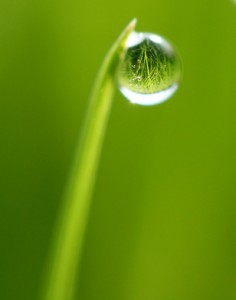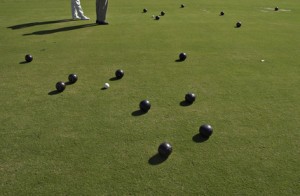Performance turf requires heat and moisture and it is inevitable that you will have to turn to your irrigation system at this time to keep your green’s progress moving forward. Failure to keep up now could result in a disastrous season later on when the green dries out unevenly, succumbs to Localised Dry patch or simply doesn’t perform due to a lack of moisture early in the season.
Tag: soil moisture deficit
Performance Basics-Watering the Green

The watering of bowling greens is one of those critical issues in bowling that splits opinion across the game.
Some purists would see no artificial watering of greens regardless of how dry the weather gets. Some are in favour to different degrees; some would argue that the green should only be watered enough to keep it alive, while others demand that the green be watered heavily and often to keep it green.
For me the critical issue is as always performance.
We can argue about the right way to water or not water greens until the cows come home, but green performance is the only measure we should really be worrying about and that means we need to deal with individual greens on an individual basis.
Some greens, mainly those that haven’t been subjected to years of sandy top-dressings dry out evenly across the surface. As the weather gets drier, these greens get faster and smoother and everyone is happy. However, there is a point of no return for these greens also and a complete drought will see them go Read more
a lot of hot air?
Air is a very important component of a Performance Bowling Green.
50% of a healthy, performance green will be air; 25% Micro-pores and 25% Macro-pores.
The Macro Pore or “aeration” space is where drainage happens.
The Micro-Pore or “capillary” space is where grass plant roots get their water and nutrients.
Tip the balance in favour of one or the other of these and things start to go wrong.
Compaction reduces the Macro air space in soil and inhibits drainage and root penetration. The soil now holds on to too much moisture and a whole raft of other problems ensue; particularly the build up of excessive thatch due to the anaerobic (lacking in oxygen) soil conditions brought about by the reduction in air space.
Thatch becomes a breeding ground for fungal disease and a base for Localised Dry Patch to take hold. The thatch doesn’t break down naturally as it should because there is a massive reduction in the population of aerobic soil microbes and they usually do this job.
Tip the balance the other way by applying excessive amounts of sand top-dressing and there is now too much air space, there is very little capillary space and the green starts to dry out too quickly. Localised Dry Patch now takes over, the surface is unpredictable and the soil can’t provide the nutrition the plants need naturally any more.
Yes, for a healthy living green that performs to order you need a lot of space; 50% air space.
Luckily, a healthy living soil knows how to do all of this without us.
We are only needed to help rectify the damage we inflict, which is mainly compaction and nutrient depletion through the removal of grass clippings.
Ahh! how simple!
Localised Dry Patch Update

Already the relatively dry April and start to May has seen bowling greens suffering from Localised Dry Patch (LDP).
As we have discussed many times on this site before, this condition is a major problem for bowling clubs throughout the UK and if your bowling green is aready showing the tell tale signs then you need to take rapid and relentless action to avoid major disruption to your bowling green surface this season.
Meantime for greens already showing signs of the problem here is my Read more
Bowls Green Maintenance Basics-Green Speed

The great debate about green speed has raged on since the beginning of the game. But what are the factors known to affect green speed?
In order of their impact on green speed these are the top 7 factors that you should bear in mind. Obviously there are others such as weather patterns, level of play etc, but these are largely out of the greenkeepers control and in any case do not figure highly in green speed management.
Thatch Layer Control and Management; this means knowing the thatch levels on your green and having a feel for how quickly thatch builds up at each point in the year.
Typically thatch will be much quicker to build up in the main growing season and it can easily take greenkeepers by surprise if they don’t keep a watchful eye on the situation.
Reducing a troublesome thatch layer significantly is a job best left for the autumn when severe measures can more safely be taken, but following the Performance Greens program will ensure that you are minimising the occurrence of new thatch through the production and maintenance of a healthy living rootzone and turf.
You can find more in-depth articles on thatch here.
Compaction Control and Relief; Second only to thatch in causing green problems, Compaction is a Read more
